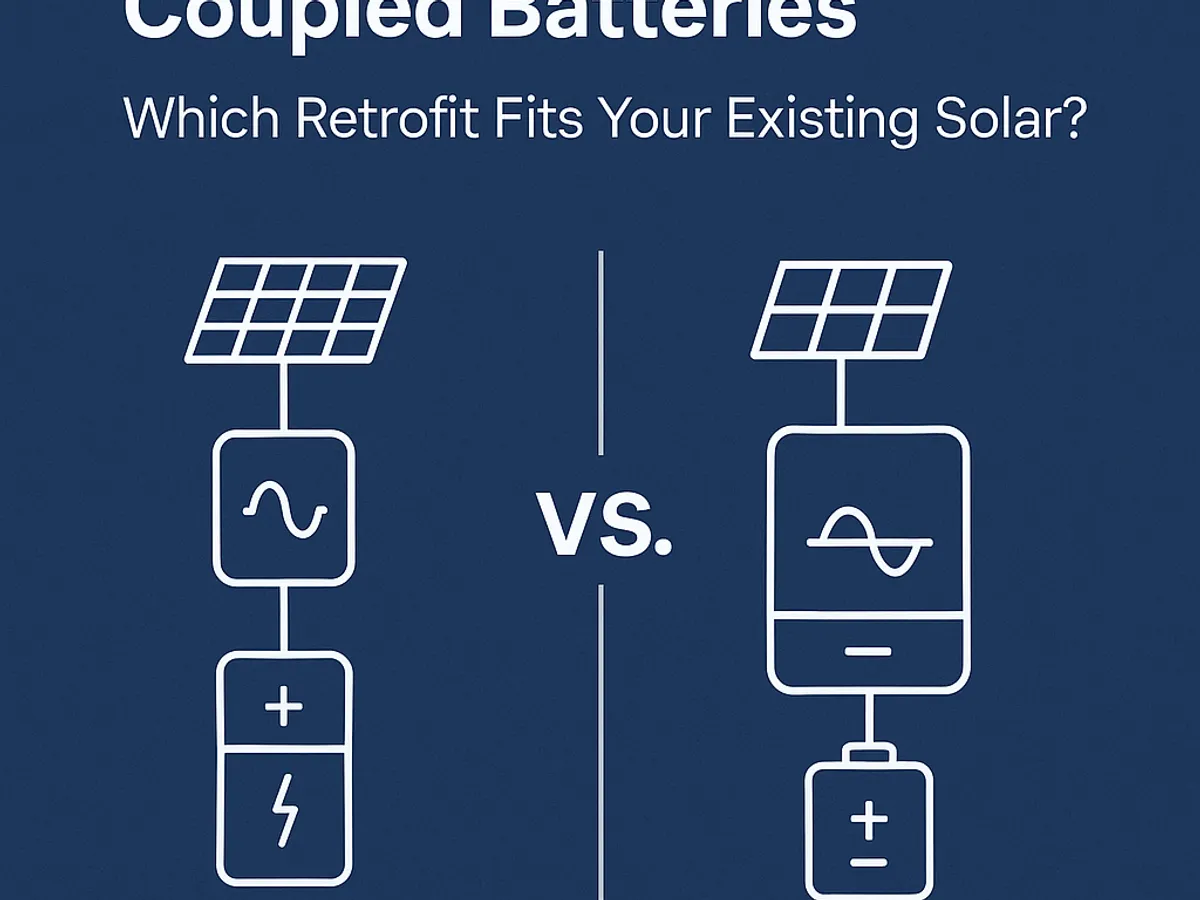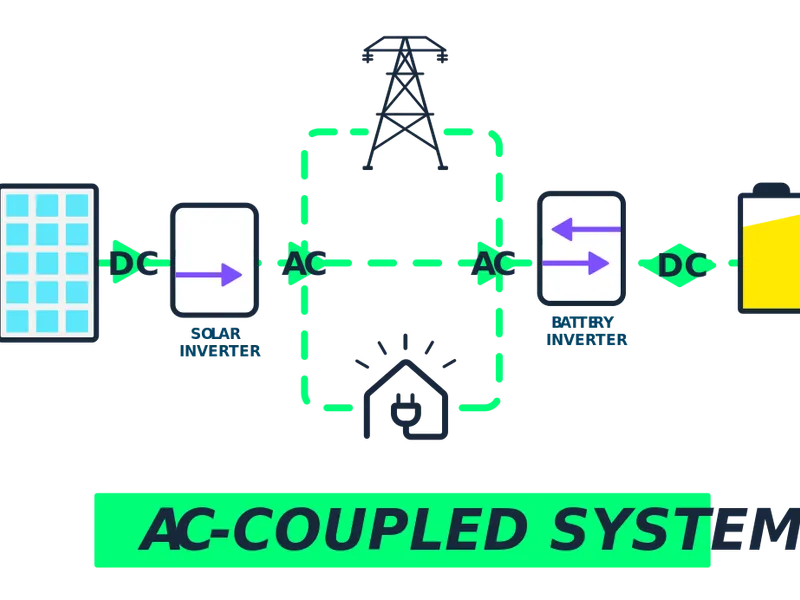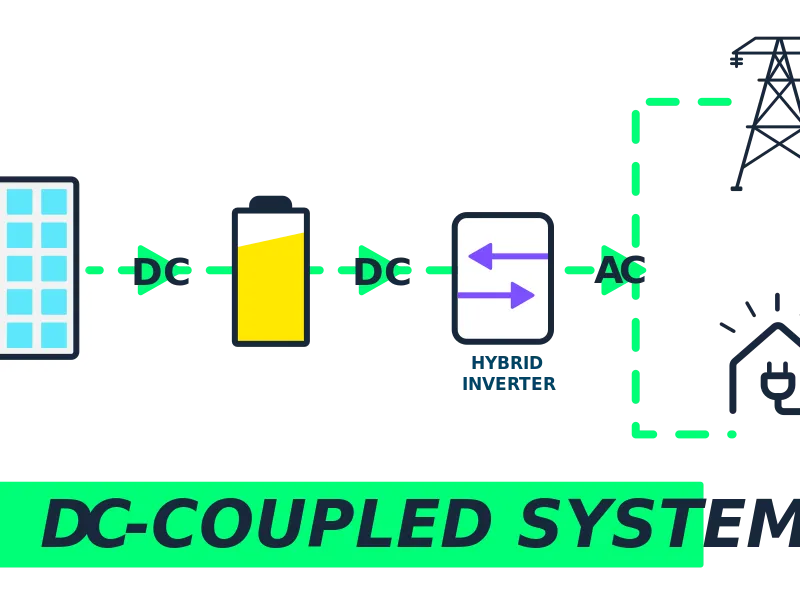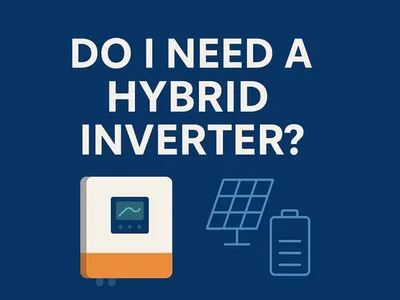AC-Coupled vs. DC-Coupled Batteries: Which Retrofit Makes Sense for Your Existing Solar System?
Thinking of adding a battery to your existing solar array? First choose a wiring method: AC coupling or DC coupling. This quick guide compares both options for retrofit projects.

1. What Is AC Coupling?

- Battery has its own inverter and ties into the home’s AC breaker panel.
- Works with any existing PV inverter, micro-inverter, or optimiser.
- Install time: a few hours; your solar stays online.
- Round-trip efficiency 85-90 % because energy converts AC→DC→AC.
2. What Is DC Coupling?

- Battery connects on the DC side through a new hybrid PV-battery inverter.
- Only one conversion, so efficiency rises to 90-94 %.
- Requires swapping out your old inverter and re-commissioning the array.
- Battery and hybrid inverter must be brand-compatible.
3. Key Differences for Retrofits
- Labour & downtime: AC = add a breaker; DC = replace inverter (full-day job).
- Cost: AC hardware pricier, labour lower; DC hardware cheaper, labour higher.
- Backup power: both can back up loads—check each model’s islanding feature.
- Scalability: AC lets you mix brands later; DC locks you into one ecosystem.
4. Pros and Cons
AC-coupled pros
- ✅Keeps your current PV warranty intact.
- ✅Plug-and-play with any inverter brand.
- ✅Fastest way to beat post-net-metering tariffs.
AC-coupled cons
- ❌2–5 % lower efficiency.
- ❌Extra wall-mounted box and breaker.
DC-coupled pros
- ✅Higher efficiency, cleaner wiring, one monitoring portal.
- ✅Ideal if you already need a new inverter.
DC-coupled cons
- ❌Hybrid inverter swap adds cost and downtime.
- ❌Battery choices limited to compatible brands.
5. Quick Decision Checklist
- Inverter age — Under five years? Choose AC.
- Module-level electronics — Micro-inverters/optimisers favor AC.
- Backup needs — Confirm islanding support before you buy.
- Budget vs. efficiency — Will 3–4 % extra efficiency pay for the swap?
- Future upgrades — Expanding the array soon? Hybrid inverter now may save work later.
Conclusion
For most homes with a healthy, fairly new PV system, AC coupling is the quickest and least disruptive path to storage. If your inverter is aging—or you want every extra percentage of efficiency—DC coupling earns its place. Get a side-by-side quote from a certified installer, then choose the option that keeps more of your solar power under your own roof.
Related Articles

Do I Really Need a Hybrid Inverter? Not Always.
Many solar homeowners think they need a hybrid inverter to add a battery. The truth? If your PV system is already up and running, an AC-coupled battery might be the smarter upgrade.
Read Article →